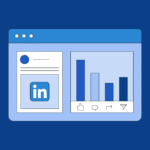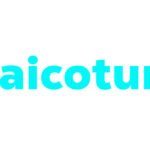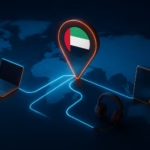Norway isn’t cheap, but it’s worth every bit of planning you put in. Between fjord cruises, train rides through mountain passes, and the quiet beauty of Oslo’s waterfront, you’ll probably spend a fair amount while you’re there – and how you handle your money can make a big difference.
Many travelers focus on flights and hotels but forget about currency until they’re standing at an airport exchange counter, losing a few percent on every transaction. The good news is that avoiding those hidden fees is easier than it looks. You just need to know where – and how – to exchange your money before you go.
Start Before You Land
The smartest move is to plan ahead. Don’t wait until you arrive at Oslo Airport or a ferry terminal to get local cash. Exchange counters in transit hubs almost always offer the worst rates, and their “no commission” signs usually hide costs in the spread – the gap between the buying and selling rates.
Check with your bank or trusted online exchange service while you’re still at home. Rates are usually better, and you’ll have time to compare options. If you prefer the convenience of doing it digitally, you can easily buy Norwegian Krone through licensed currency platforms that lock in the rate before your trip. It’s not about getting a deal, but more about avoiding surprises.
Even having a small amount of cash when you land makes life easier – for taxis, luggage storage, or a coffee before you find an ATM that doesn’t eat your budget.
Use ATMs – but Choose Carefully
Norway is one of the most card-friendly countries in the world, but some smaller shops, kiosks, or public toilets still prefer cash. When you do need cash, local ATMs are usually the best option for fair exchange rates – as long as you skip the wrong prompts.
When the screen asks if you’d like to be charged in your home currency instead of Norwegian Krone, always choose “without conversion” or “in local currency.” That one decision can save you 3–7% in dynamic currency conversion fees.
Also, stick to ATMs operated by reputable banks. Independent machines in airports, hotels, or tourist zones often add sneaky markups or fixed withdrawal fees.
Watch Out for Card Conversion Traps
You might think paying by card is fee-free – it’s not always that simple. Some terminals abroad automatically charge you in your home currency. It seems convenient, but it comes with another hidden cost.
If you’re ever given the option on a card machine, select “charge in local currency.” It ensures your bank handles the exchange at the standard market rate, rather than the merchant’s inflated one. Those small decisions, repeated over a trip, can save you enough for an extra dinner out in Bergen.
Contactless cards are accepted nearly everywhere in Norway, even for small purchases. Just remember that your card provider may still add a 1-3% foreign transaction fee unless you’re using a travel-friendly account.
Travel Cards and Digital Wallets
Multi-currency or travel cards have made life much easier for frequent travelers. You can load several currencies at once and switch between them through an app, avoiding repeated conversion costs.
Services like Revolut, Wise, and Monzo let you store Norwegian Krone digitally and pay directly in the local currency, which means no hidden exchange at the point of sale. If you’re staying in Norway for more than a week, it’s worth setting one up in advance.
Digital wallets like Apple Pay and Google Pay also work widely in Norway, so even if you forget your card, you won’t be stuck.
Know When Cash Helps
You can get by in Norway using cards almost everywhere, but a small amount of cash still comes in handy. Buses in rural areas, market stalls, and some local cafés may prefer it.
Withdraw just enough for small purchases, tips, or emergencies – usually the equivalent of 500–1,000 NOK per person is plenty for a week’s trip. You’ll spend it faster than you expect, especially on coffee, snacks, or ferry tickets.
Carrying a bit of cash also gives you a backup in case your card is declined or a connection issue interrupts payments – rare, but possible in the fjords.
Compare Rates, Not Promises
Currency exchange can be confusing because every provider claims to offer “the best rate.” The truth is, rates change all the time – what matters more is transparency.
If a service doesn’t clearly list its markup or total fee, skip it. Look for one that shows both the mid-market rate and the final amount you’ll get. Even a 2% difference adds up quickly on a full travel budget.
And don’t feel pressured to exchange large sums at once. It’s often better to split conversions across two points in your trip, especially if you’re unsure how much you’ll actually need in cash.
A Few Extra Tips
You don’t need to overthink it, but a few extra habits can help you keep more of your money for the fun stuff:
- Keep your receipts. If you end up with leftover Krone, some exchange offices will buy it back at a better rate if you can show proof of purchase.
- Avoid airport kiosks. Their “no commission” signs are usually just creative marketing – the rates are almost always worse.
- Use your home bank’s partners. Many banks waive international ATM fees if you withdraw from a partner bank in Norway, so check that list before you go.
- Watch your banking app. Some apps now flag high-fee machines or alert you when you’re about to make an expensive withdrawal.
Little things like this keep your budget from leaking away on fees – and that money goes a lot further when it’s spent on travel, not transactions.
Final Thoughts
Norway may run on cards and contactless payments, but a little preparation goes a long way. Knowing when to use cash, how to handle conversion prompts, and where to exchange before you leave can save you from losing 5-10% of your budget to hidden fees.
The goal isn’t to chase the absolute best rate – it’s to keep your money working for you, not for the banks. Handle your currency smartly, and you’ll have more left for the things that really matter: a warm cinnamon bun in Oslo, a ferry through the fjords, or that extra glass of aquavit you didn’t plan on ordering.














